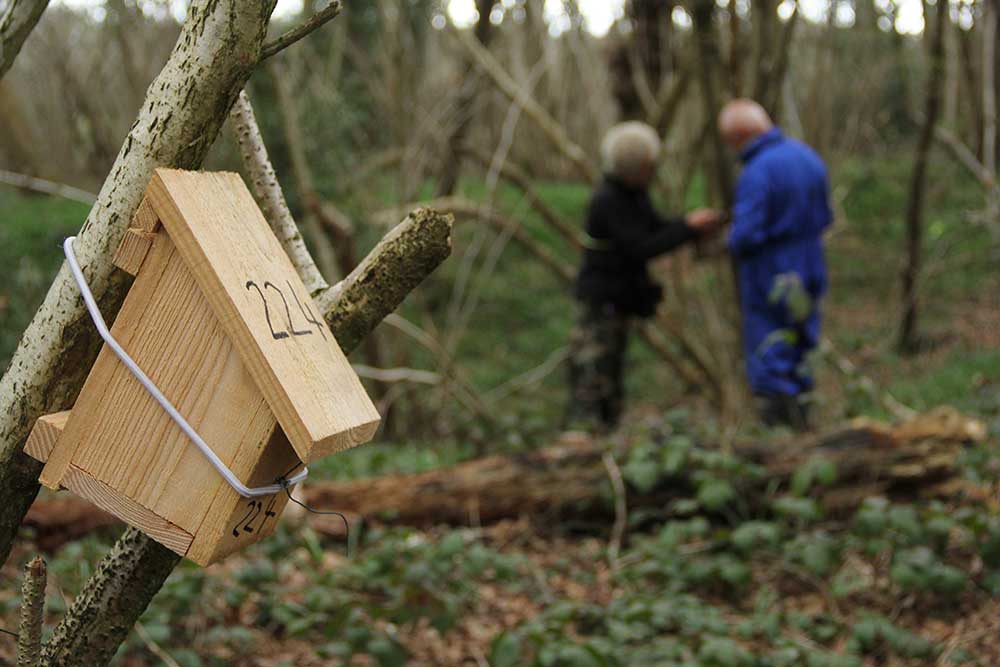Hazel dormouse disturbance licence

Checking a dormouse box where it’s possible one might be using it requires a disturbance licence.
You’ll need two written references verifying your competency to hold a licence from people in separate organisations who have held a licence for at least three years. If you need any additional actions on your licence, such as fur clipping, you’ll require at least one further reference.
It’s advisable to start the process by attending a one-day training course on dormouse ecology and conservation. Then find a licence holder to train you in the field on the practicalities of dormouse box checking. Note, licence holders aren’t obliged to train others and the majority are monitoring dormice voluntarily.
The hazel dormouse log book
Our dormouse log book explains how to get a licence, helps you to keep track of your progress, and is a place to record the surveys you have done and dormouse activities you have attended. Completing the logbook is not a requirement to getting a licence but it will will be looked on favourably by both NE and NRW.
It’s advisable to start the process by attending a one-day training course on dormouse ecology and conservation. Then find a licence holder to train you in the field on the practicalities of dormouse box checking. Note, licence holders aren’t obliged to train others and the majority are monitoring dormice voluntarily.
Getting a licence can take at least two to three years due to the high demand, the shortage of good dormouse sites and the need to see and process dormice in all life stages. It’s best to go out with at least two licence holders to several sites so you can get the two references required.
Licence return and data entry
In England, dormouse disturbance licenses are known as Class licences. They’re renewed automatically so long as you respond to the NE email sent out at the beginning of the year that asks you to confirm you still hold a licence, have recorded dormice and submitted records. You must respond to NE confirming you still want your licence and that you have submitted the data through PTES website.
Records should be submitted to PTES. Licence return data and National Dormouse Monitoring Programme data need to be entered separately.
All licenced dormouse monitors need to complete the NE licence section on the PTES website which asks you how many dormice have been disturbed under your licence. This can be done once checks have been completed for the year.
The main site monitor should submit the biometric data for that site (at any time) in addition to the above. Both need to be done – data entered once is not replicated. The licence return data is for Natural England. NDMP data and ad hoc data for the National Dormouse Database is for the national dormouse population trend.
We have been working to save hazel dormice in the UK for over 20 years. Find out about our campaigns and how you can help.
Back to Protection for hazel dormice
